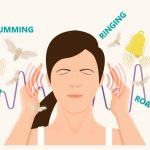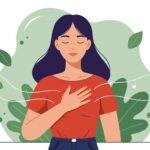A change is coming to support people in recovery. Recovery Historian William White explores the new trend of bringing the recovery lifestyle into public spaces.
No culture is neutral about psychoactive drugs. Such substances are placed into four overlapping categories: celebrated (ritualized, promoted, and commercialized), instrumental (regulated as to who, when, where, and how use can occur), tolerated (available but discouraged and socially stigmatized), or prohibited (stigmatized and severely punished). Such designations are subject to rapid change over time. Think, for example, how many of these categories alcohol, tobacco, caffeine, marijuana, cocaine, methamphetamine, and opioids have occupied throughout American history or even within your lifetime.
The social and legal status of psychoactive drugs evolves under powerful political, economic, social, and religious forces. Such cultural designations influence drug availability, the size and characteristics of the user population, product variability and cost, product purity and potency, methods of drug administration, as well as when and where drug use can occur. Historically, licit and illicit drug industries have played a central role in expanding each of these dimensions and religious and public health institutions have served as constraining influences across these dimensions.
At present, there are several historically important trends in the United States regarding the cultural status of psychoactive drugs. Caffeine is achieving unprecedented levels of ritualization and celebration within the culture. Cannabis is being increasingly destigmatized, decriminalized, medicalized, legalized, and commercialized. Tobacco products and the tobacco industry are facing increased stigmatization and control efforts. Opioids are undergoing increased control, and opioid-linked pharmaceutical companies are facing retribution for past profiteering and marketing excesses. Less culturally visible are shifts in alcohol use, a rise in alcohol-related deaths, and the ever-increasing diversification and promotion of alcohol products.
These shifts mark dramatic changes within the culture. Note, for example, that the physical and social spaces in which tobacco products can be purchased and used are shrinking at the same time the parallel spaces for cannabis are expanding. This brief essay is a further exploration of my interest in such spaces and what they mean for people recovering from addiction to various psychoactive drugs (For an earlier essay on this, see HERE).
Several trends are noteworthy related to the expansion of sober spaces in local communities.
First is the expansion of recovery support institutions and activities beyond addiction treatment programs and formal recovery mutual aid organizations such as Alcoholics Anonymous and other 12-Step programs and the growing network of religious and secular recovery mutual aid organizations. These new institutions include recovery community organizations (focused on advocacy, peer recovery support, and harm reduction), recovery homes, recovery high schools, collegiate recovery programs, recovery churches and ministries, recovery cafes, recovery theater groups, recovery-focused sports and adventure venues, recovery book clubs, and recovery music festivals, to name a few. Collectively, these new recovery-focused institutions are expanding the physical, psychological, and social space in which recovery can flourish within local communities. They are creating a drug-free, recovery-friendly social world in which people seeking escape from addiction can live, love, learn, work, worship, and play.
A second trend of note is the “sober-curious” and related movements whose members are seeking a healthier and more enjoyable alternative to alcohol/drug-saturated social activities. These include the rise of wellness clubs, nutrition groups, sober bars, and other health-focused groups who sponsor alcohol and other drug free activities. The sober curious movement includes “Dry January” and other activities that give people an organized way to try on sobriety as a healthy lifestyle. Capitalizing on this movement are a growing network of businesses, that prior to pandemic restrictions, offered alcohol-free drinks (“mocktails”, non-alcoholic beers and wines) within alcohol-free venues.
The above trends suggest that the drug-free space in local communities is expanding for people self-identified as being in addiction recovery as well as for people who have concerns about their alcohol or drug use and want to sample the drug-free lifestyle without the potential stigma attached to addiction treatment or recovery mutual aid involvement. These trends suggest a critically important strategy for recovery advocacy and recovery support organizations: expand local recovery support institutions and recovery spaces within the local communities you serve. This moves our vision beyond that of supporting the personal recovery journeys of individuals and families to creating physical and social worlds that accept and welcome a drug-free lifestyle.
In his most recent book Talking to Strangers, Malcolm Gladwell explores the concept of coupling–the idea that “behaviors are linked to very specific circumstances and conditions.” In this view, addiction is a collision between personal vulnerability, the ever-increasing pharmacological power of psychoactive drugs, and social contexts that encourage drug exposure and amplify the intensity of drug effects. Similarly, recovery is a complex spectrum of ideas, behaviors, sentiments, and relationships elicited and rewarded within particular physical and cultural contexts. Change the contexts and you change the probabilities of both addiction and recovery.
Physical places and sociocultural contexts exert profound effects on human behavior—a reality too often ignored within biological models of addiction. The repertoire of behaviors that constitutes the states of addiction and addiction recovery are far more than an expression of intrapersonal vulnerabilities and strengths—more than a mirrored expression of genes, character, and personality. Personal behavior can reflect the influence of or domination by the ecosystems in which one is nested/trapped. This suggests the need to extend our focus beyond the intrapersonal to the ecology of recovery—creating social contexts that elicit recovery and suppressing contextual factors that increase risk of addiction.
So, do we continue to send fragile recoveries into environments in which only the strongest recoveries survive? Or do we build recovery-friendly communities in which even the most fragile recoveries have a chance of survival? Those are the questions we face as a country and as people working in the addiction/recovery arenas. We must always attend to recovery at a personal level, but we must also think about recovery in its local, regional, national, and global contexts. Both addiction and recovery are a reflection of the ecologies in which they are nested.
This article was originally published by William White on July 2, 2020 here





















